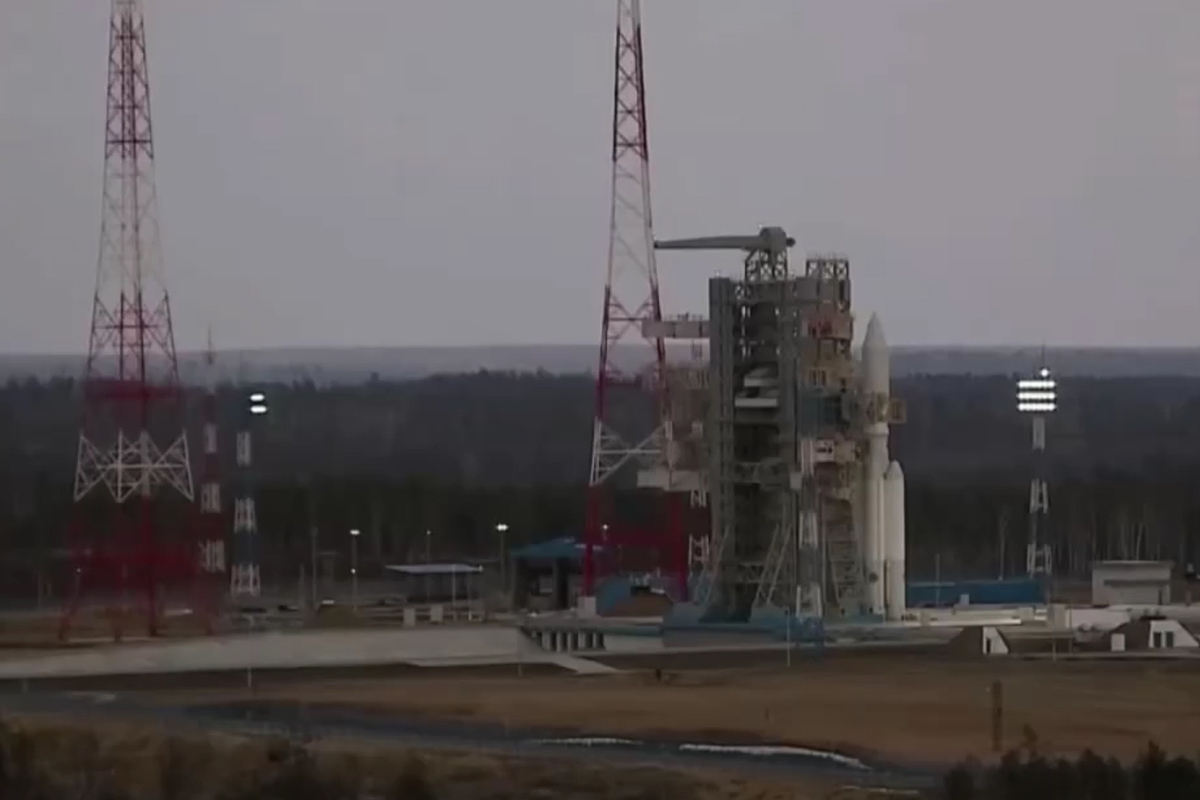The reason for the postponement of the launch of “Angara A-5” has been named
[ad_1]

Problems found in the engine starting system
The Angara A-5 launch vehicle does not want to launch into space yet. Its debut launch from the Vostochny Cosmodrome could not be carried out for the second day in a row – on April 10 it was again postponed by a day. The head of Roscosmos, Yuri Borisov, promptly informs journalists about the reasons. We learned the opinion about all this from industry experts.
Let us remind you that the first attempt of the Angara launch vehicle to rise into the sky was on Tuesday, April 9. But literally two minutes before the “Start” command, the automation issued: “All clear,” and everyone who accompanied the rocket to the cosmodrome heard a loud sound. Some compared it to a bang, others even to an explosion. But the “terrible” rumors did not have time to spread to the people, and all thanks to the head of Roscosmos, Yuri Borisov, who was not lazy and literally a few minutes after the incident came out to the journalists and explained everything: “The launch did not take place due to a failure of the pressurization system of the oxidizer tank of the central unit.” . Everyone exhaled, which meant that the defect was not so serious as to remove the launch vehicle from the launch pad. As experts explained to us, tanks filled with liquid fuel during preparation for the launch are usually inflated with gas so that there is no vacuum. Therefore, some drainage valve under pressure could have “slammed”. However, the 24-hour delay required draining the oxygen (one of the liquid fuel components) from the fuel system.
A day later, on April 10, it was filled again. But the automation again “cancelled” the launch. And again Yuri Borisov came out to the journalists, confirmed the version about the drainage valve and gave the audience a longer speech than the day before: “We are at the initial stage of flight testing. <...> This stage is precisely intended to identify all the nuances that are possible: of a production, design, technological and operational nature. Therefore, for developers, cancellations of launches for technical reasons are a fairly common occurrence.”
If, according to Borisov, the specialists sorted out the valve, on the second day a new technical problem appeared, related to a failure in the engine start control system. “Most likely, this is a software error, which will certainly be found today,” said the head of the space department. The launch was once again postponed exactly one day.
Despite the fact that the industry does not remember such double launch delays, experts really treat them calmly: “The new launch complex, the new launch vehicle for the Vostochny, require grinding in,” they reason. – The Americans sometimes cancel the launch of their rocket five times. The main thing is that in the end “Angara” gets off to a successful start. And if for this we need to wait, to correct all the inaccuracies, we will wait.” Let’s hope that on April 11, on the eve of Cosmonautics Day, the rocket will nevertheless set off on its first flight from the Far Eastern cosmodrome.
The Angara A-5 rocket produced by the State Research and Production Space Center named after. Khrunicheva should replace the only Russian heavy-class launch vehicle Proton. It is distinguished from the Proton, which flew on harmful heptyl, by its environmentally friendly fuel (oxygen-kerosene) and modularity.
Previously, the Angara – in a light version (Angara-1.2), capable of launching 3.5 tons of payload into low Earth orbit, and in a heavy version – Angara A-5, designed for 25 tons, was launched only from the Plesetsk cosmodrome , located in the Arkhangelsk region. Now, after the creation of a new launch pad for the Angara in Vostochny, this has become possible from the Far East. Unlike the launch complex in Plesetsk, from Vostochny it will be possible to launch heavier payloads into space – satellites or heavy space complexes to the Moon. This is all thanks to a more convenient location – the closer the launch site is to the equator, the less fuel needs to be burned to put the vehicles into orbit. According to the general designer of the Salyut Design Bureau (part of the Khrunichev State Research and Production Space Center) Sergei Kuznetsov, cited by RIA-Novosti, the rocket’s payload when launched from Vostochny is 500 kilograms higher than from Plesetsk. This means that with each launch, Roscosmos will save millions of dollars on its withdrawal.
By the way, it is at Vostochny that the Angara launch complex is also designed for a manned mission – it is equipped with a special system for delivering cosmonauts on board.
If everything works out as it should, then on April 11 at noon Moscow time the Angara A-5 launch vehicle will still make its first launch from Vostochny. As MK learned from unofficial sources, in addition to the mass-size payload simulator, a small CubeSat (ultra-small satellite) Gagarinets satellite from a private Russian company will be delivered into orbit.
[ad_2]
Source link








